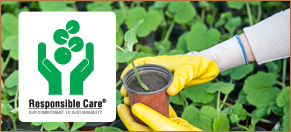



Vishnu Shankar
Abundant in energy resources and home to a large youth population, the Middle East (ME) boasts of some of the fastest growing economies in the world. It has reasonably high standards of living, although varied across countries, thanks to the region's rich energy endowment. With the ongoing industrial development and social revival initiatives by local governments, the region is poised for brighter days ahead, albeit with its share of localised geo-political tensions and a challenging global economy.
OVERVIEW OF THE MIDDLE EAST ECONOMY
The Middle East - comprising the Kingdom of Saudi Arabia (KSA), Qatar, United Arab Emirates (UAE), Oman, Bahrain, Kuwait, Yemen, Lebanon, Iran, Iraq, Jordan, and Syria - is known to account for close to half of the world's known crude oil reserves and over one-third of natural gas reserves. This largely share of oil's contribution to their GDP.

Within the ME, the Gulf Cooperation Council (GCC), comprising the KSA, the UAE, Kuwait, Qatar, Oman, and Bahrain, accounted for about 65 percent of the regional GDP during the year. Driven by ongoing developmental activities in the GCC, its share is tipped to increase to about 68 percent of overall ME GDP, projected to be US $3,373 billion, by 2020.
Investments in excess of US $770 billion have been planned in the ME during 2011 to 2020. About 53 percent of the total investment is projected to be in the GCC member nations, while the rest is predominantly being shared by Iran and Iraq. Oil and gas production and allied industries including petrochemicals, refining, and midstream operations are estimated to account for over 65 percent of the total outlay.
CHEMICAL INDUSTRY IN THE MIDDLE EAST
The global chemical industry was valued at US $4.7 trillion (including pharmaceuticals) in 2011. It is projected to register a Compound Annual Growth Rate (CAGR) of 4.4 percent from 2011 through 2020, and become US $6.9 trillion by makes up for the harsh climate, limited water availability, and scarce arable land that characterise the region. Revenue from trade of oil and oil products represented close to half of the regional Gross Domestic Product (GDP) in 2011. In countries like Kuwait, Iraq, Qatar, and the KSA, oil revenue superseded the revenue from their non-oil sources. However, most countries in the ME are actively pursuing policies and initiatives to diversify their industrial interests and lower the 2020. Asia Pacific (APAC) would lead the growth with an estimated CAGR of 5.8 percent during the period. The Middle East, along with Africa, would trail APAC growth during the period and is estimated to reach US $263 billion by 2020.

In 2013, the chemical industry in the ME was valued at US $160 billion. Petrochemicals and polymers, followed by fertilizers, were the largest segments; together accounting for over 60 percent of the market. Other major segments included paints and coatings, water treatment chemicals, construction chemicals, etc. Despite significant regional consumption volumes, oilfield and drilling chemicals are mostly imported into the ME.
The ME chemical industry is projected to grow at a faster pace than global growth from 2013 to 2020. Petrochemicals and fertilizers would be the fastest growing segments, with projected CAGRs of 8.3 percent and 6.7 percent, respectively. In addition, these two segments are estimated to account for over 75 percent of the market in 2020. Paints and coatings, oilfield chemicals, and water treatment chemicals are also likely to witness CAGRs of 5.0-5.5 percent from 2013 to 2020. The overall industry is estimated to grow at a CAGR of 4.7 percent from 2013 through 2020.
Industrial diversification initiatives being pursued by the local governments and expansions underway in regional manufacturing capabilities would be the key growth drivers for the chemical industry through 2020. World-scale plants and integrated chemical complexes are being set up at newly developed industrial cities, mostly in the KSA and Qatar. The feedstock advantages in the ME, in addition to its strategic location bridging the emerging eastern markets and developed western markets, are attracting key global participants to establish their manufacturing assets here. Dow Chemical Company, LyondellBasell, ExxonMobil, Chevron Phillips, Total, Shell, and Sinopec are some of the top global chemical companies who have established their presence in the region.
Supporting this trend is an increase in collaboration efforts between local and international chemical companies. For instance, Saudi Aramco, the KSA's national oil company and one of the largest oil companies in the world, is collaborating with Dow, Total, and Sumitomo Chemical in individual projects to develop world-scale refining and petrochemical production facilities. Other notable partnerships in the regional chemical space are SABIC-ExxonMobil, SABIC-Sinopec, Ma'aden-ThyssenKrupp, Qatar Petroleum-Shell, and Qatar Petroleum-Air Liquide.
However, major participants are increasingly viewing decreasing margins owing to rising manufacturing costs and competition in the international market as an important restraint. At the same time, declining availability of easily recoverable oil and natural gas resources (which serves as primary feedstock for the petrochemical / chemical industry) in the ME is likely to pose a formidable concern to be addressed by authorities as well as market participants over the medium to long term.


DIVERSIFICATION INITIATIVES AND OPPORTUNITIES IN THE MIDDLE EAST
The ME, particularly the GCC, is diversifying into the production of value-added chemicals, extending beyond its traditional forte of bulk chemicals and petrochemicals. Current portfolio includes commodity polymers like polyethylene (PE) and polypropylene (PP), and basic petrochemicals and fertilizers. Large projects are underway for the production of value-added chemicals, including performance polymers, speciality chemicals, and intermediates. These projects are expected to be operational at different periods towards the end of this decade. The region is expected to move further ahead into the production of fine chemicals, including agrochemicals and pharmaceutical ingredients, from 2020 onwards.
DIVERSIFICATION EFFORTS ARE LARGELY FOCUSED ON TWO SEGMENTS:
- Value-added petrochemicals and products: The GCC is likely to command a share of over 35 percent of global petrochemical production by 2020, as indicated by the aggressive expansions being witnessed at the petrochemical production facilities in these countries. Large-scale petrochemicals and their derivative complexes are being set up in the GCC currently, with the upcoming Sadara Chemical Company (Saudi Aramco-Dow Chemical Company joint venture) being the most notable among them.
- Plastic conversion: Despite being one of the largest manufacturers of polymer resins in the world, the GCC currently accounts for only 2 percent of the global plastics conversion market. However, with steady growth in demand from the local consumer goods market and easy access to key raw materials, it is expected to register annual growth in the range of 10 percent and above in the medium to long term. This would make it one of the fastest growing regions in the global conversion industry.
MEGA TRENDS IMPACTING THE MIDDLE EAST'S CHEMICAL INDUSTRY
Civil and commercial construction, emergence of industrial cities, and the development of intra-regional transportation network are the three key Mega Trends that are empowering the chemical industry. Jubail and Yanbu in the KSA, Mesaieed in Qatar, Al-Ruwais in the UAE, Asaluyeh in Iran, and Shuaiba in Kuwait are some of the prominent industrial cities that are attracting large investments from major chemical manufacturers. The GCC railway project designed to connect all the six member nations, King Abdullah and Jazan Economic Cities in the KSA, Lusail City in Qatar, Mohammed Bin Rashid City in the UAE, various international airports, etc. are some of the other mega projects that are currently underway in the region.

An estimated US $4.3 trillion is tipped to be spent in the Middle East and North Africa (MENA) up to 2020, across various mega projects. Driven by these projects, the demand growth for construction chemicals and materials, which include paints and coatings, concrete admixtures, flooring compounds, waterproofing compounds, and adhesives and sealants, etc. is expected to be ahead of the regional GDP growth up to 2020.
While the ME has access to most of the essential industrial resources like raw materials, utilities, and human resources, it falls short of the advanced technologies that are required to make manufacturing possible. Some of the key trends being observed in the ME technology sphere are:
- Buying and Replicating: With acquisitions, companies can quickly gain both technology and production capacities
- Incentivizing Foreign Investors: Special incentives offered by states for foreign investors with leading edge technologies
- Joint Ventures: Large joint ventures, structured to deliver specific benefits for each party
- Technology Licensing: Companies have the option of licensing advanced technology from a foreign competitor
- Innovation / Research and Development (R&D): Success in downstream areas requires continuous product development and improvement
THE WAY FORWARD
The Middle East GDP is likely to grow at a CAGR of about 4.7 percent from 2011 to 2020, and is expected to reach US $3,373 billion by 2020. Growth prospects remain bright for the regional chemicals industry as well. The industry revenue is likely to reach US $220 billion by 2020, up from the US $160 billion in 2013. Value-added petrochemicals and downstream plastic conversion sectors are likely to be the key growth drivers; both are positioned to benefit from large-scale investments and incentives from local governments. Also, global companies are moving eastwards towards the Asian growth markets, buoyed by rising consumer purchasing power. With Europe tipped to become the pressure point of plant closures, the ME is increasingly being seen as rightly positioned at a pivotal point to which chemical and petrochemical manufacturers can flock to and flourish over the coming years.
ABOUT THE AUTHOR:
VISHNU SANKARAN heads the Chemicals & Foods Practice, one of Frost & Sullivan's dynamic business units in Middle East, North Africa & South Asia (MENASA). Vishnu has been responsible for incubating and building this Practice in Middle East and also oversees all consultancy engagements as well as business development activities across different segments within this business unit in the MENASA region. Over his last 11 years with Frost & Sullivan, Vishnu has executed and overseen many client specific projects and research assignments spanning plastics, petrochemicals and derivatives, paints and coatings, additives, specialty chemicals, specialty polymers and downstream products.
Key engagements that he manages involve recommendations to clients on market entry strategies, product diversification, downstream product opportunities, best practices, technology/outsourcing partner identification and commercial due diligence. Some of the key clients that he has worked with in MENA include Saudi Aramco, Sabic, The Cluster Program in Saudi Arabia, Zamil Group, Jotun Paints, Sipchem, Equate Petrochemicals, Rhodia, Chemanol, etc to name a few.
Recently, Vishnu has been actively engaged with Government entities and large business houses within Saudi Arabia, advising them on new product diversification opportunities based on available and emerging feedstock in the Kingdom. Vishnu has participated as a speaker and panelist at industry summits across Middle East and India, sharing his views on emerging segments across chemicals and has also been quoted in leading business publications and industry journals. [For more information, contact Priya George at priyag@frost.com]

